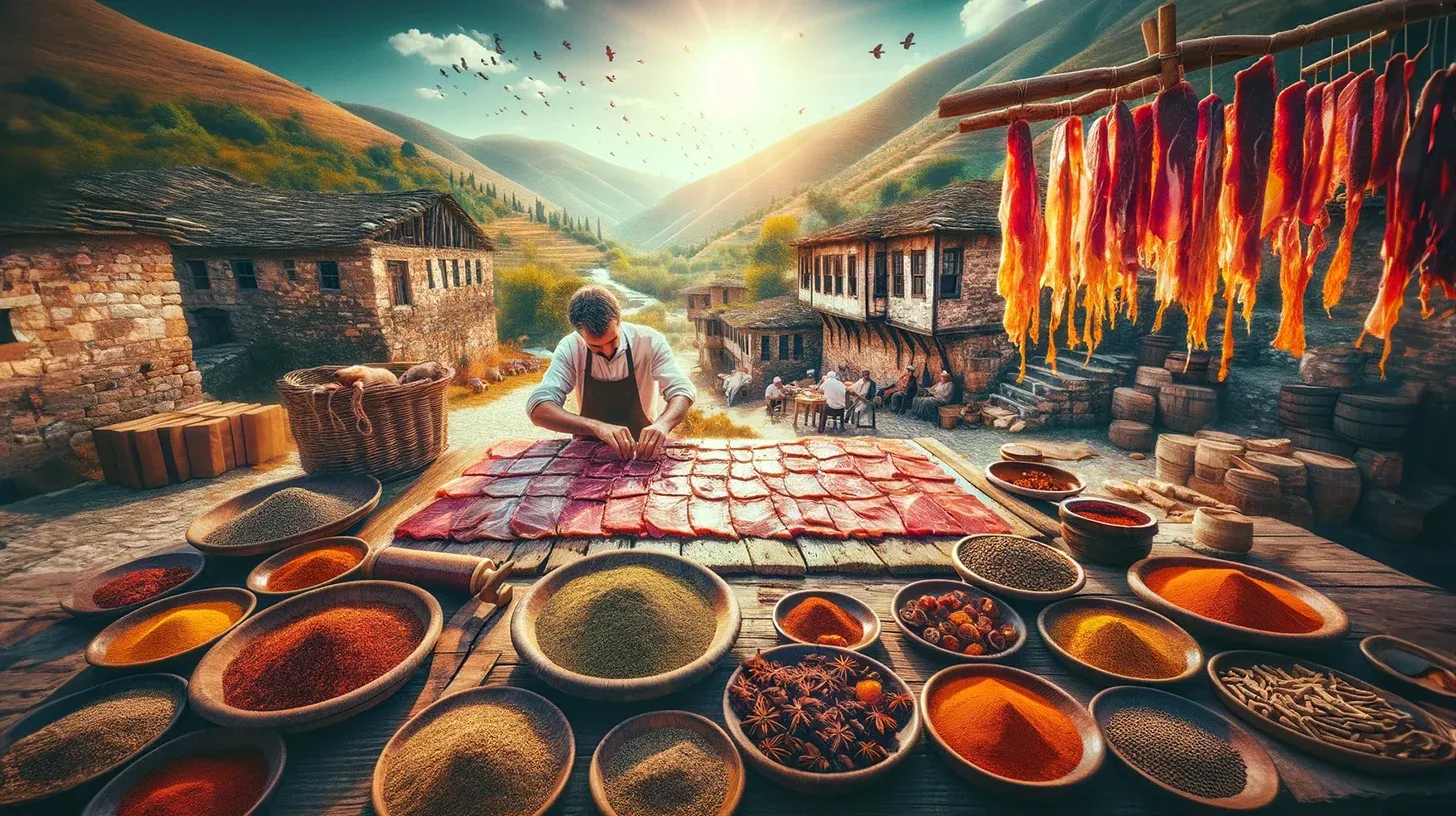26 February 2024
Pastirma's Global Journey From Ancient Preservation to Gourmet Delight.

Press the play button in the top right corner to listen to the article
Pastirma, a seasoned and air-dried cured meat that has journeyed through time and geography, stands as a culinary testament to the rich intermingling of cultures, particularly in Arabia and Asia Minor. This delicacy, with its roots deeply embedded in the historical tapestry of these regions, narrates a story of gastronomic evolution and cultural exchange.
The origins of pastirma trace back to the ancient techniques of meat preservation employed by Central Asian nomads, who laid the groundwork for what would become a cherished culinary tradition across the Middle East and the Mediterranean. The method involved pressing the meat under saddlebags to dry during long horse rides. This technique, refined over centuries, eventually morphed into the sophisticated production processes observed in Arabia and Asia Minor, areas that played pivotal roles in the spread and development of pastirma.
In Arabia, the adaptation of pastirma reflects the region's culinary ingenuity and the spice trade's influence. Arab cooks enhanced the basic preservation technique by incorporating a rich blend of spices, including fenugreek, cumin, and paprika, which not only contributed to the meat's preservation but also imbued it with a distinctive flavor profile. This innovation marked a significant evolution in pastirma's history, transforming it from a mere necessity to a gourmet delicacy.
Asia Minor, with its crossroads of civilizations, became a melting pot for the culinary traditions of the East and West, further enriching the pastirma tradition. The region's diverse climatic conditions and spice routes contributed to the development of unique variations of pastirma, each reflecting the local palate and available ingredients. The inclusion of garlic and the use of different meats, such as beef and camel, are testaments to the adaptability and diversity of pastirma production in this area.
Globally, pastirma production varies significantly, with each region offering its twist on the traditional recipe. In Eastern Europe, for example, pastirma is often made with pork, a departure from the Islamic world's beef or camel preferences. The seasoning mix and drying techniques also vary, reflecting local tastes and climatic conditions. This global diaspora of pastirma production underscores the delicacy's universal appeal and adaptability.
Despite its widespread popularity, pastirma faces criticism, primarily concerning health. The high salt content and preservation process raise concerns about its impact on cardiovascular health. However, pastirma's proponents argue that, when consumed in moderation, it offers nutritional benefits, including high protein content and essential vitamins.
The story of pastirma is not just about a piece of dried meat but a narrative of human civilization, cultural exchange, and gastronomic innovation. It stands as a symbol of the shared heritage of mankind, transcending geographical and cultural boundaries to bring people together over the shared love of food.
The content, including articles, medical topics, and photographs, has been created exclusively using artificial intelligence (AI). While efforts are made for accuracy and relevance, we do not guarantee the completeness, timeliness, or validity of the content and assume no responsibility for any inaccuracies or omissions. Use of the content is at the user's own risk and is intended exclusively for informational purposes.
#botnews















































































